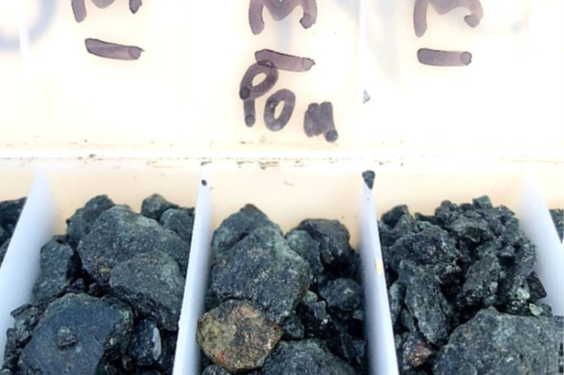Galileo Mining Ltd (ASX: GAL) has confirmed the exciting promise of its Callisto palladium-platinum-copper-nickel discovery in company’s 100% owned Norseman project in Western Australia with assays from five of the six RC holes completed.
“The assays from all drill holes undertaken at Callisto contain significant zones of mineralisation and confirm initial results from the discovery drill hole NRC266,” Managing Director, Brad Underwood, said.
“Today’s results are a very important step forward as we have now shown the sulphides are carrying high value metals in all six drill holes completed.
“The next round of RC drilling is due to begin late next week with a focus on drilling across strike to determine the thickest and highest grades in the easterly direction. The same program of drilling will then continue to the north as we aim to move from discovery drilling to advanced and detailed resource drilling.
“The extensive prospective strike, combined with the thick and consistent mineralisation drilled to date, indicates the potential for a large mineralised system.
“Approximately 20 holes will be undertaken in the coming round of drilling and we look forward to updating the market with results from this exciting new discovery.”
Six holes for 1,142 metres were drilled at Callisto with discovery hole NRC266 recording the widest interval of sulphide mineralisation.
The zone to the east of NRC266 is now a priority target and will be tested in the drill programme due to commence next week.
The target zone is a sulphide mineralised unit developed at the base of an ultramafic sill where it intrudes into a package of sedimentary rocks. Encouragingly, every drill hole exhibits a consistent geological mineralisation pattern.
Drill holes in the initial programme were completed on two east-west lines spaced 50 metres apart with a 50-metre drill spacing along the lines. Drill holes in the upcoming programme will continue to be spaced approximately 50m apart with the intention of defining the grade variation across strike prior to step out drilling along strike to the north.
Initial interpretation of results from the Callisto discovery continue to show similarities with South Africa’s Platreef deposits with disseminated sulphide mineralisation hosted in the lower unit of a layered ultramafic sill. The initial samples from NRC266 are currently at the laboratory for nickel sulphide collection fire assay with assays pending (to test for rhodium, osmium, ruthenium, iridium).
Significant prospectivity could be added to the area if the samples are found to contain rhodium or other PGE metals. Down hole EM surveying of NRC266 and NRC269 has been completed with a strong EM response below the holes modelled as a single large plate and interpreted to represent a sediment.
Deep diamond drilling is planned for later in the year to explore for additional mineralisation below the sediment.
For further information please visit: https://www.galileomining.com.au/












